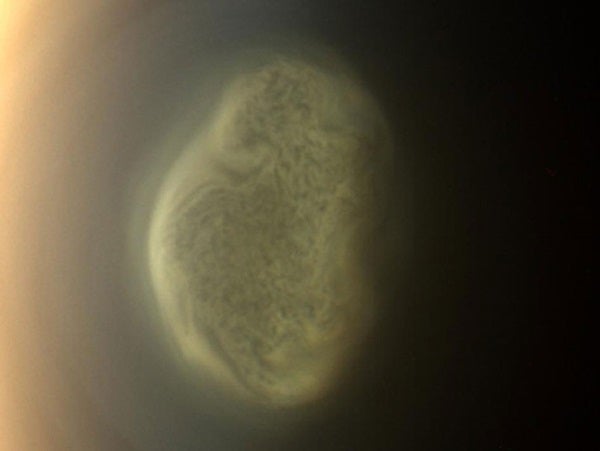Cassini first saw a “hood” of high-altitude haze and a vortex, which is a mass of swirling gas around the pole in the moon’s atmosphere, at Titan’s north pole when the spacecraft first arrived in the Saturn system in 2004. At the time, it was northern winter. Multiple instruments have been keeping an eye on the Titan atmosphere above the south pole for signs of the coming southern winter.
While the northern hood has remained, the circulation in the upper atmosphere has been moving from the illuminated north pole to the cooling south pole. This movement appears to be causing downwellings over the south pole and the formation of high-altitude haze and a vortex.
Cassini’s visible light cameras saw the first signs of hazes starting to concentrate over Titan’s south pole in March, and the spacecraft’s visual and infrared mapping spectrometer (VIMS) obtained false-color images May 22 and June 7.
“VIMS has seen a concentration of aerosols forming about 200 miles (300 kilometers) above the surface of Titan’s south pole,” said Christophe Sotin from NASA’s Jet Propulsion Laboratory (JPL) in Pasadena, California. “We’ve never seen aerosols here at this level before, so we know this is something new.”
During a June 27 distant flyby, Cassini’s imaging cameras captured a crow’s-eye view of the south polar vortex in visible light. These new images show this detached high-altitude haze layer in stunning new detail.
“Future observations of this feature will provide good tests of dynamical models of the Titan circulation, chemistry, cloud, and aerosol processes in the upper atmosphere,” said Bob West from JPL.










